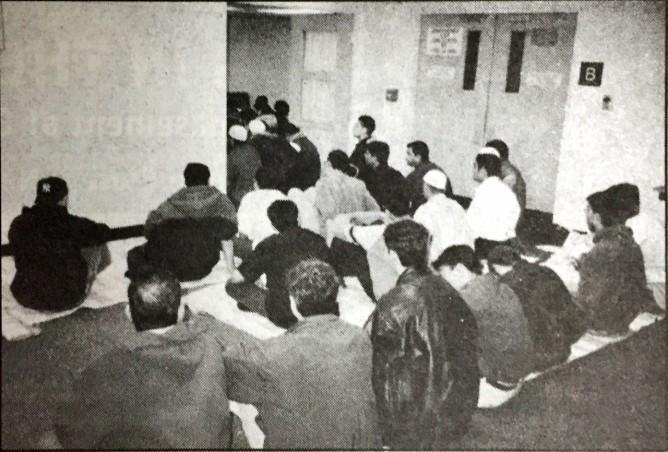By Amy Bourne
Muslim student’s repeated pleas for more prayer space in a Ryerson gym continue to fall on deaf ears, even after a Friday press conference to pressure school administration into submission.
This week, Ryerson’s v.p. administration and student affairs Linda Grayson stood firm on her position that students will have to work around any problems they may encounter due to a lack of space in the Multifaith centre in the basement of the business building.
This, despite the example set at the University of Toronto which has been able to accommodate their Muslim population by making rooms available that are not intended for religious worship.
When presented with the practices at other universities, Grayson said it is not fair to compare Ryerson’s policies with those of another school.
Ryerson is a secular university and provides a multifaith centre for all religious groups to share, she says. If that is not enough, those groups must look elsewhere.
The students want to use the lower gym in Kerr Hall for their mandatory prayers between 1 p.m. and 2 p.m. each Friday afternoon, a request that has been denied for more than a year.
At a Nov. 5 meeting, Grayson suggested three possible resolutions to Muslim students: pray separately, pray at different times in the same area, or go elsewhere.
But in a press conference held last Friday at Ryerson, the Ryerson Muslim Students Association expressed its frustration with the proposed resolutions.
“It is absolutely against Islam to pray in separate congregations. The importance of praying together is that it creates brotherhood and sisterhood, it unites the hearts, and it allows everyone to pray equally, side by side, shoulder to shoulder, no matter what your rank in society is,” said Ihtasham Qureshi, a third-year electrical and computer engineering student.
Grays said the options are all the university can offer. “The reason there is no resolution is because the RMSA does not consider the Multifaith Centre a resolution. They are taking a very hard position. They want to pray together, and that is not possible here.”
At the U of T, director of student affairs Susan Addario says the school has several allocated prayer rooms for students of all religions. They also use areas like the debate room in the Hart House, which is not meant for religious use.
“The test is whether it is reasonable [to use academic locations for prayer], and we have been able to acquire the use of space that wasn’t needed for other things,” Addario says. “It’s never enough, but we’ve tried to understand that lack of space is a barrier for our students. Though our university is secular, it doesn’t expect the students to be.”
U of T’s considerably larger Muslim population has not been given a gym for prayer but the university has provided them with several other locations for the last 20 years.
Grayson, however, does not agree with the idea. “If everybody does the wrong thing, that doesn’t make it right,” she said of universities that provide extra meeting places for Muslim prayer.
RMSA has approximately 400 members, 200 of whom attend mandatory Friday prayer sessions between 1 p.m. and 2 p.m. in the Multifaith centre, a room with a 50-person capacity.
On Oct. 12, RMSA submitted a proposal to renovate the current space to fit more students. The proposal, which included the removal of a wall among other renovations, was swiftly rejected because it would cost $15,000.
U of T had better luck with its pitch. It will soon be building another multifaith centre with a meeting room, a prayer room, a foyer, and several offices.
Odelia Bay, president of RyeSAC and RMSA advocate, said “the Muslim holy day falls on a day when they are required to be in school. The university has a responsibility to help each student fulfill their academic goal.
“Any university [that] helps accommodate different religions should be recognized as taking a step in the right direction.”











Leave a Reply